What to Expect From Your First Batch of Compost
When you're ready to remove your first batch of compost (your initial base layer) from your HOTBIN, don't be surprised if it needs some additional processing. This is perfectly normal, especially at the beginning when the HOTBIN may not have reached its optimal temperature. Subsequent batches typically won't require as much reprocessing unless your HOTBIN has consistently operated below 40°C.
We would recommend that you always leave it 90 – 120 days before you harvest your first batch, this takes into consideration the time it may take you to get your HOTBIN up to temperature. That said, there is nothing stopping you from having a sneaky peek behind the hatch after 90 days, just to see how composty things are looking.
Once you have harvested your first batch, you can then subsequently start harvesting your compost every 30 to 90 days after that.
Why the Base Layer Stays Cool
Due to heat rising the base of the heap will always tend to be the coolest zone especially during the winter because cold air is drawn in through the base plate. The hottest and most active layers are the mid and top zones where breakdown and composting occurs the quickest. So even if the top layer is cooking at a toasty 60°C, the very bottom of the heap will be cooler. Typically, its this cooler bottom layer where the compost matures and worms other composting microorganisms migrate to help finish the compost.
What's in a Base Layer?
All types of waste have varying rates of digestibility, and this knowledge is key to successful composting. To get your HOTBIN off to the best start, we recommend adding plenty of easy-to-digest waste when you begin.
Why, you ask?
Well, this type of waste provides a rapid source of food for the hot composting bacteria. As they break down the waste, heat is generated as a natural by-product of the digestion and decomposition process.
Fresh Waste = Heat Production
Bear in mind, without a regular addition of fresh waste in the HOTBIN, heat cannot be produced or maintained. Consequently, you may find some harder-to-digest materials might not fully break down within the expected timeframe.
If composting easier-to-digest waste types, on the other hand, you may find that usable compost production is quicker than expected.
In summary, composting speed will vary massively from user to user as everyone composts different waste types in different quantities, but basically the warmer the bacteria are, the happier and faster they work!
What Should Your First Batch of Compost Look Like?
Now, let's set some realistic expectations. Your first base layer is unlikely to resemble the idealised compost we often imagine. Homemade compost be it from a hot or cold composter does not resemble shop bought compost.
Instead, it may fall within the range of the following five types:
- A reasonably good base layer batch ready for immediate use.
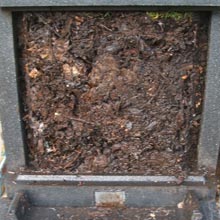
- Blackish, compressed compost, somewhat wet and sticky.
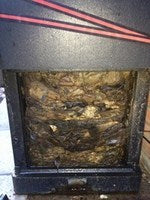
- Mostly brown, with visible pieces remaining.
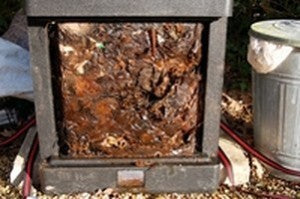
- Brown/black, wet, sticky, and possibly oozing water.
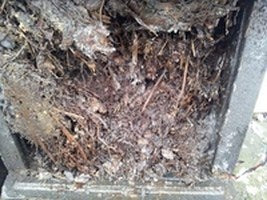
- Some green bits and clear pieces still visible.
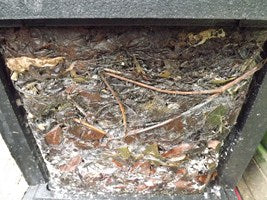
Next Steps for Different Base Layer Types
The time will come after 90-120 days that you'll need to think about opening the hatch and harvesting the original base layer. Depending on how your base layer looks, we have tailored advice to help you complete the decomposition process:
If it looks looks like compost and smells earthy harvest the ready material and either bag it for later or use on your garden.
Resembling Images 2 & 5:
- Remove any uncomposted waste from the lower third of heap and add this material back into the top of the HOTBIN
- Mix in approx. 10 litres of shredded paper or corrugated card (half a carrier bag full)
- Add and mix in three double handfuls of woodchip, approx.2 litres (half a kitchen caddy full)
- Add a caddy full of fresh, easy-to-digest waste (preferably uncooked kitchen waste and grass if available). Ensure that the fresh waste is thoroughly mixed to evenly distribute the bacteria, which will first break down the easily digestible material and generate heat more rapidly before moving to the harder-to-digest base layer.
(You can mix everything in a large container or barrow before adding back to the bin if preferred). - After doing this you should see temperatures rise to around 40-60°C for a couple of days before settling at 30°C.
- Continue adding new waste as usual, along with shredded paper and woodchip
- Check the second base layer in 8-10 weeks, and you should find compost ready to use.
For Base Layers Resembling Images 3 & 4:
You're in luck! These base layers can be used immediately for gardening purposes. When Reprocessing Is Challenging If your base layer doesn't reheat and has a sour smell, don't despair. Spread it out on a ground sheet and let it bask in the sun for a day or so. It will re-aerate, lose its odor, dry up, and become easier to separate the large lumps from the small. Any incompletely decomposed parts can be added back to the HOTBIN's top section following the instructions above.
General Reprocessing Tips
Sometimes, you might encounter the odd item in your compost batch that requires a bit more time to fully decompose. Twigs, pieces of eggshell, or bone fragments can be added back into the HOTBIN with fresh waste. Always remember to include bulking agent and shredded paper or corrugated cardboard each time you add new waste to the HOTBIN. If the new material is partially composted, add fresh waste as well to provide the bacteria with easy-to-digest food.
Don't Be Disheartened
Remember, your first batch of compost may not be perfect, and that's absolutely okay! Each base layer is unique, depending on the time of year and the materials available. Your base layer plays a crucial role in getting your HOTBIN off to a great start, so keep the enthusiasm alive.
For more information on what to expect from subsequent compost batches, take a look at "What Does HOTBIN Compost Look and Feel Like" Happy composting!

